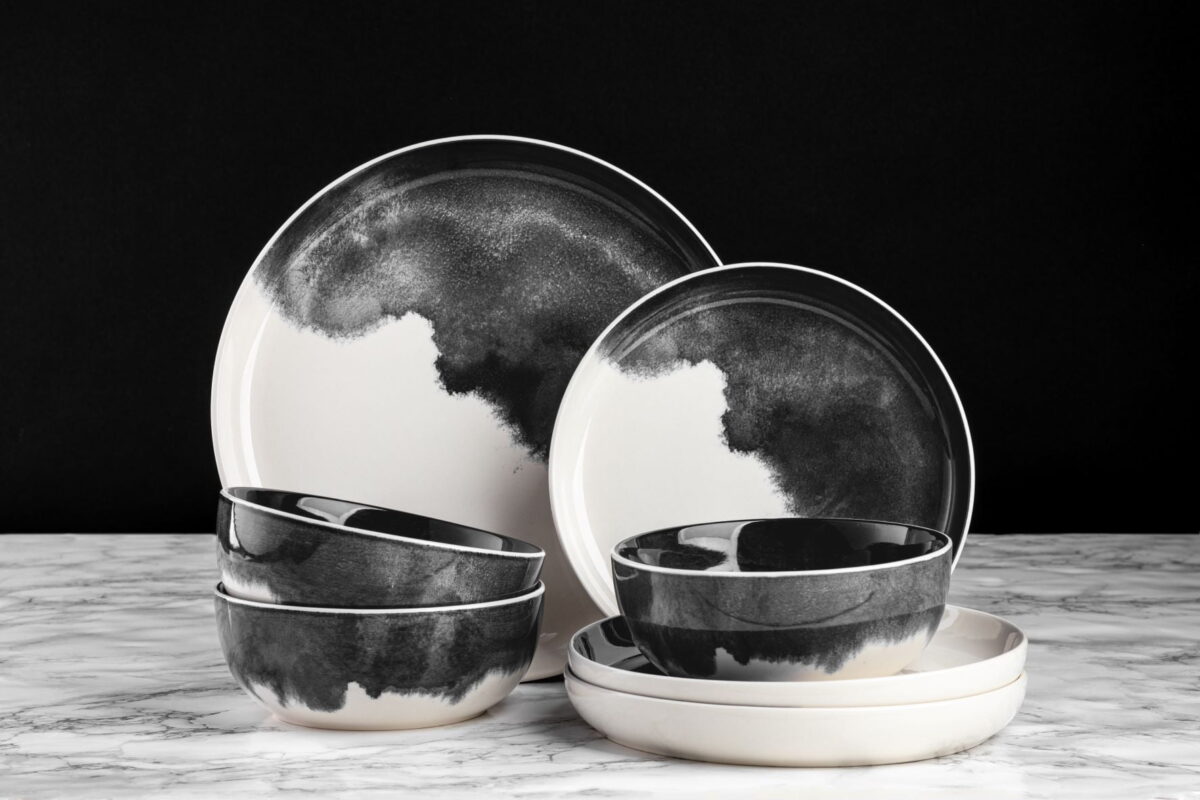Dinnerware
Exploring the History and Evolution of Dinnerware: From Traditional to Contemporary Designs
Dinnerware, the humble yet essential element of dining, has a rich and fascinating history that spans cultures and centuries. From the earliest civilizations to modern times, dinnerware has evolved not only in function but also in aesthetics, reflecting the societal, cultural, and technological changes of each era. In this blog post, we delve into the captivating journey of dinnerware, tracing its evolution from traditional to contemporary designs.

Ancient Origins:
The origins of dinnerware can be traced back to ancient civilizations such as Mesopotamia, Egypt, and China. In Mesopotamia, around 4000 BCE, people began using clay pottery for storing and serving food. These early forms of dinnerware were rudimentary, often consisting of simple bowls and plates made from clay.
In ancient Egypt, dinnerware played a significant role in religious rituals and feasting. Elaborately decorated pottery and stone vessels were used to serve food and drink during ceremonial occasions. These vessels were often adorned with intricate designs and hieroglyphics, showcasing the artistic craftsmanship of the time.
Meanwhile, in China, the art of porcelain-making emerged during the Shang Dynasty (1600-1046 BCE). Porcelain, prized for its durability and translucency, quickly became the preferred material for dinnerware among the elite class. Chinese porcelain, adorned with intricate patterns and motifs, was highly sought after and traded along the ancient Silk Road, influencing dinnerware styles in other regions.
Medieval Feasting:
During the Middle Ages, feasting and communal dining were integral parts of medieval society. Dinnerware of this period reflected the hierarchical structure of medieval life, with elaborate banquets hosted by nobility featuring ornate tableware made from precious metals such as gold and silver.
Silverware, including plates, goblets, and utensils, adorned with intricate engravings and embellishments, became symbols of wealth and status. These extravagant pieces were often commissioned by royalty and aristocracy to showcase their power and prestige during lavish feasts and celebrations.

Renaissance Elegance:
The Renaissance period ushered in a revival of arts and culture, influencing all aspects of life, including dining and entertainment. Dinnerware of this era became more refined and elegant, reflecting the humanist ideals of beauty, symmetry, and harmony.
Porcelain production flourished in Europe during the Renaissance, thanks to the discovery of kaolin clay deposits in Germany. Italian and Dutch artisans perfected the art of porcelain-making, producing exquisite dinnerware adorned with intricate hand-painted designs inspired by nature, mythology, and classical motifs.
The Age of Enlightenment:
The 18th century, known as the Age of Enlightenment, brought about significant advancements in science, technology, and design. Dinnerware during this period became more accessible to the middle class, thanks to the industrialization of pottery production and the mass production of ceramics.
The invention of transfer printing allowed for intricate designs to be reproduced quickly and affordably on ceramics, making decorative dinnerware more accessible to a wider audience. English potteries such as Wedgwood and Spode became renowned for their innovative techniques and iconic designs, shaping the future of dinnerware production.
Victorian Opulence:
The Victorian era was characterized by its opulence and excess, reflected in the lavish dining rituals of the time. Dinnerware of the Victorian period featured elaborate patterns, rich colors, and intricate gilding, epitomizing the grandeur and refinement of the era.
Fine china and porcelain dinnerware adorned with floral motifs, gilt accents, and intricate borders became highly fashionable among the Victorian upper class. Table settings were elaborate affairs, with multiple courses served on an array of specialized plates, bowls, and serving pieces.
Modern Simplicity:
The 20th century witnessed a shift towards modernism and simplicity in dinnerware design. Influenced by movements such as Art Deco, Bauhaus, and Minimalism, dinnerware of this era embraced clean lines, geometric shapes, and understated elegance.
Designers such as Eva Zeisel, Russel Wright, and Raymond Loewy revolutionized dinnerware design with their minimalist yet functional creations. Streamlined forms, organic shapes, and matte glazes became hallmarks of modern dinnerware, reflecting the changing tastes and lifestyles of the modern consumer.
Contemporary Trends:

In the 21st century, dinnerware continues to evolve, with contemporary designers pushing the boundaries of innovation and creativity. Sustainable materials, minimalist aesthetics, and customizable options are shaping the future of dinnerware design, catering to the diverse needs and preferences of today’s consumers.
From handcrafted ceramics to cutting-edge 3D-printed tableware, the possibilities for dinnerware design are endless. Whether it’s a classic porcelain set, a quirky artisanal creation, or a sleek minimalist design, dinnerware remains an essential element of dining culture, bridging the past with the present and inspiring generations to come.
Conclusion:
The history and evolution of dinnerware reflect the ever-changing tastes, technologies, and cultural influences that have shaped human civilization. From humble clay vessels to modern masterpieces of design, dinnerware continues to serve as a canvas for artistic expression, cultural identity, and social ritual. As we look to the future, one thing remains certain: the timeless appeal of beautifully crafted dinnerware will continue to enrich our dining experiences for generations to come.

